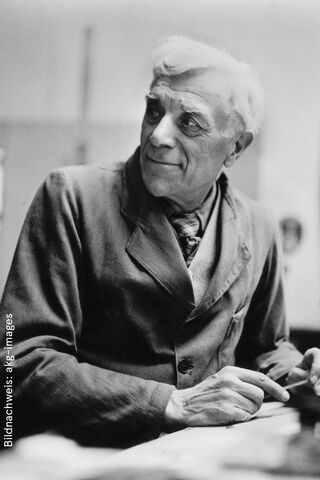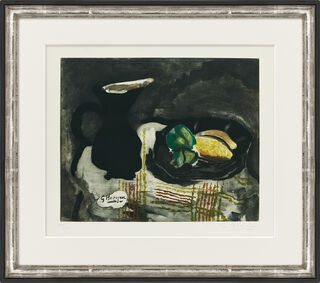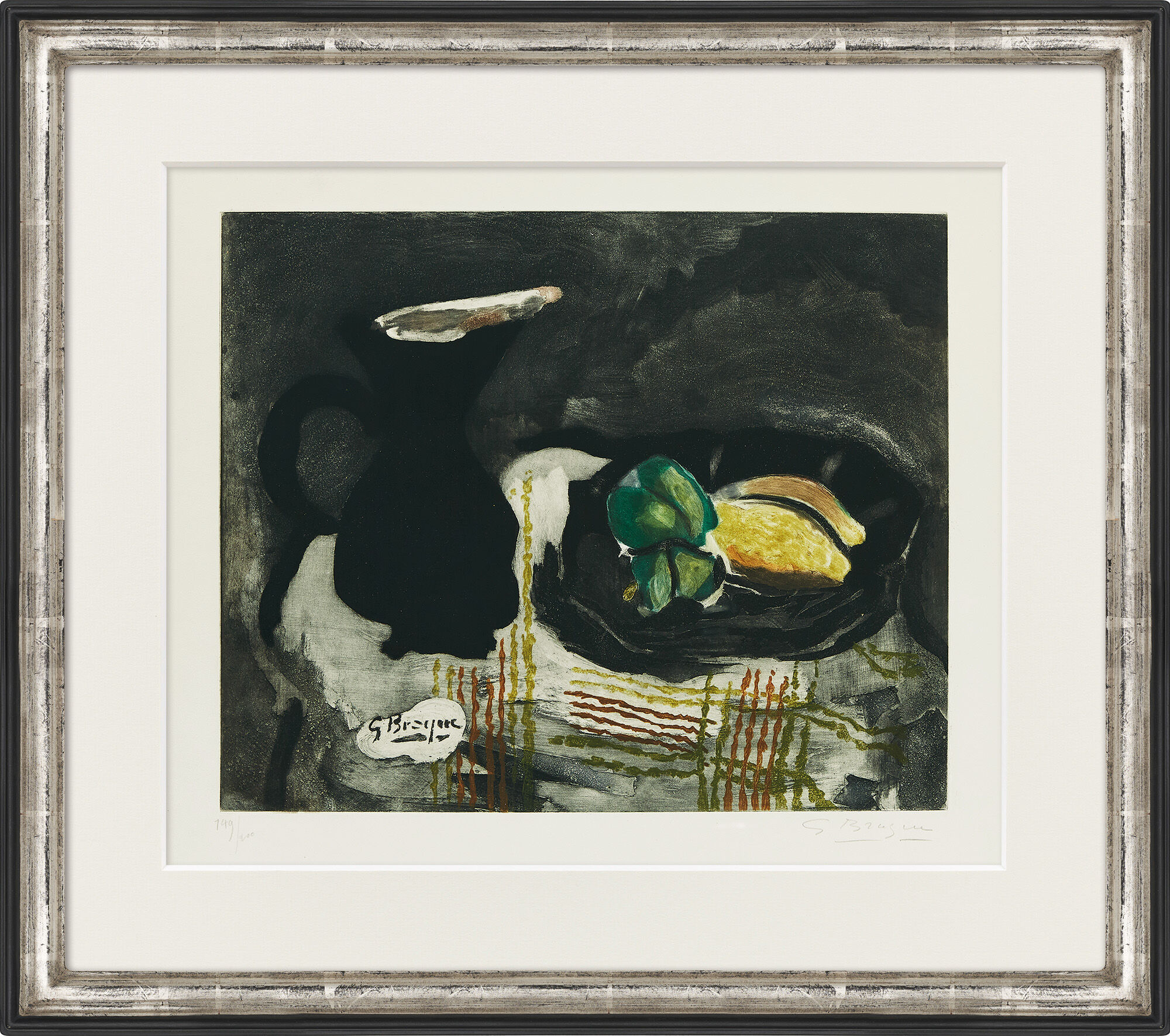Picture "Pichet noir et citrons" (1960) New


Picture "Pichet noir et citrons" (1960) New
Quick info
limited, 200 copies | numbered | signed | etching on handmade paper | framed | size 65.5 x 73 cm
Detailed description
Picture "Pichet noir et citrons" (1960)
The colour etching offered here is based on the oil painting "Pichet, citrons, compotier" (carafe, lemons, fruit bowl) from 1928, which is now on display at the Museum Ludwig in Cologne. In his later prints, Braque returned to the still life, certainly the most important theme of his art. The objects known from his still lifes, such as the jug and fruit bowl, are gathered together. The complex spatial structure is striking: Although the darkness of the background suggests a unified large space, the numerous vertical lines in the lower part of the picture create a fragmentation of the space, reminiscent of cubist imagery.
Colour etching, 1960, edition of 200 copies on laid paper, numbered and signed. Catalogue raisonné Vallier 1004. Motif size 37.5 x 45.5 cm. Sheet size 49.5 x 65 cm. Size in frame 65.5 x 73 cm as shown.

About Georges Braque
1882-1963
Georges Braque, the revolutionary of modern art and a classic figure of French art, left behind a magnificent oeuvre of prints: around 300 etchings, copperplate engravings, lithographs, and book illustrations. His life's work bears witness not only to an extraordinary joy in experimentation but also to a highly idiosyncratic pictorial imagination and creative power.
Braque stated the following essential observation: "We must be content with discovery and renounce explaining. There is only one valuable thing in art: the thing you cannot explain. A work that does not have a magical effect is not a work of art."
Before the First World War, Cubism emerged in 1908 in France, with its founding fathers being Georges Braque, who was born in Argenteuil, Val-d'Oise on May 13, 1882, and his friend and companion Pablo Picasso. Returning from the war, however, Braque pursued different artistic paths from Picasso, which in turn linked him to Henri Laurens and Juan Gris.
The guitar, vases and tables were central motifs in the Cubist paintings. The pure colours that still dominated his early fauvist landscape paintings subside to a grey-brown colour palette. As an antithesis to Cubism, Braque developed the collages, creating a new pictorial reality with scraps of wallpaper and newspaper clippings. This was followed by landscapes again in the 1930s, which, however, bear witness to a still-life-like structure. From 1938 onwards, the traditional theme of the studio became important to the artist, enriched by the motif of birds with a mystical component.
In the last years of his life, the artist presented himself not only as a painter and sculptor but also as a jewellery designer. His "Bijou Braque" combined the art of jewellery with the aspiration of the artist. He incorporated Greek motifs into over 100 designs. A dozen of them were even purchased by France. His art was so highly regarded that, in 1961, he became the first artist to have an exhibition dedicated to him in the Louvre during his lifetime. When Braque died on August 31, 1963, in Paris, the French Minister of Culture, André Malraux, made his status clear once again: "He is at home in the Louvre with the same right as the Angel of Reims in his cathedral."
The overlaps and saturations in Braque's works do not appear intensely spatial but are an integral part of the picture plane. This is why his paintings appear aesthetic and sensitive. His works "activate" the sense of seeing, and the pictorial impression is always ambiguous. The motifs are dissolved into colourful and formal structures. The form has autonomy and, at the same time, is integrated into larger constellations. All major museums exhibit his work in prominent positions.
The field of graphic arts, that includes artistic representations, which are reproduced by various printing techniques.
Printmaking techniques include woodcuts, copperplate engraving, etching, lithography, serigraphy.


